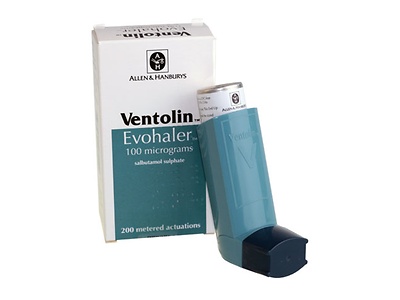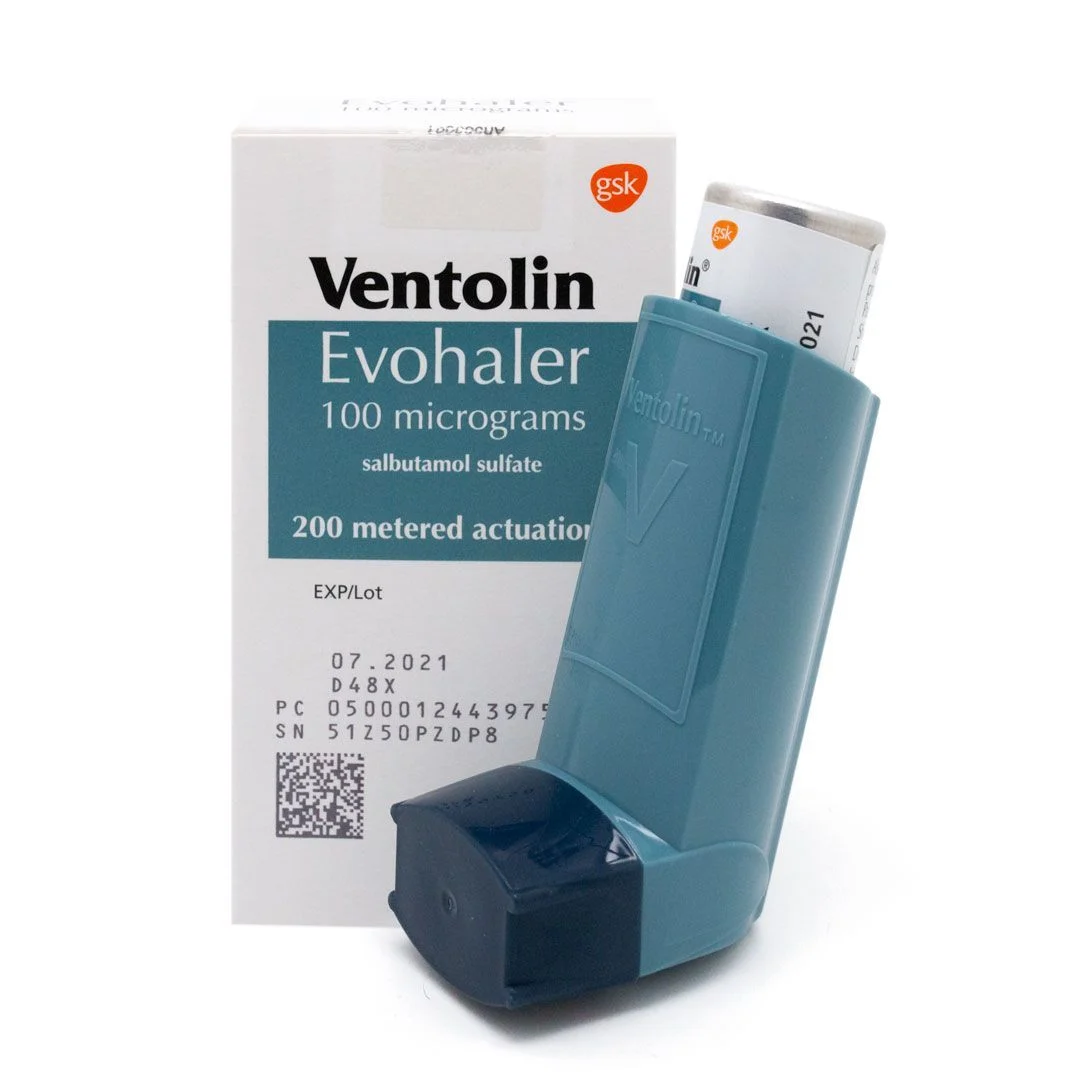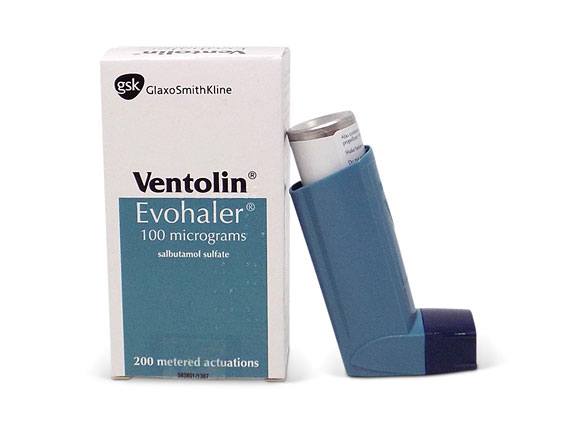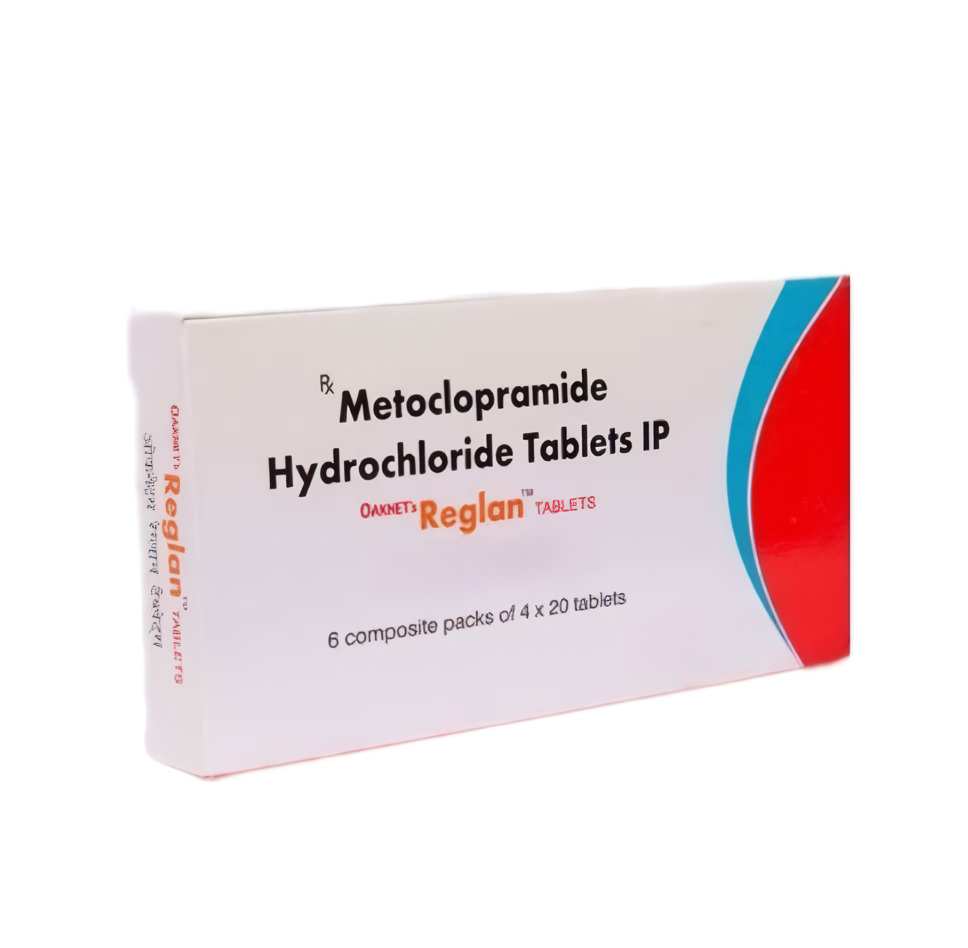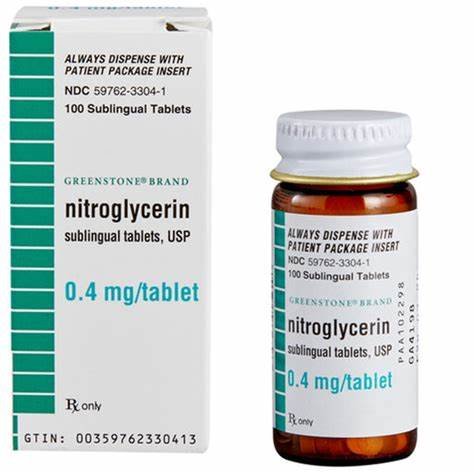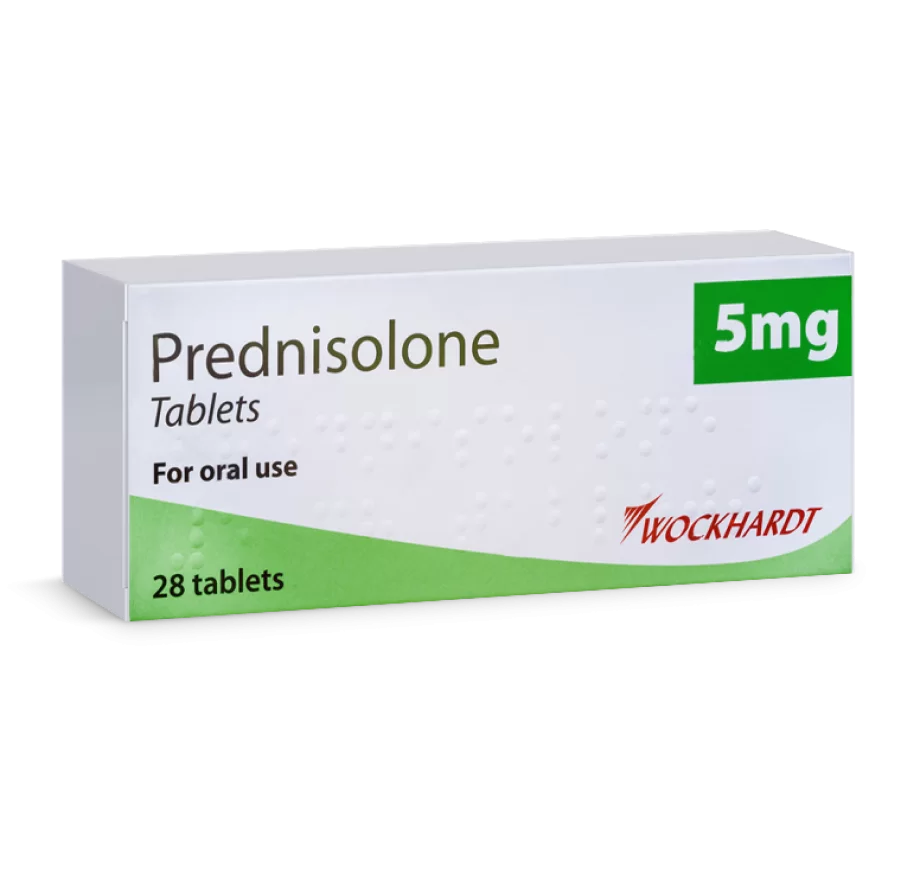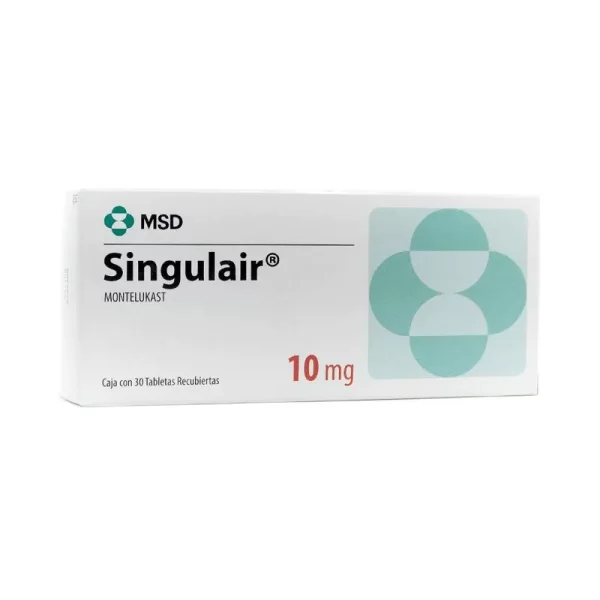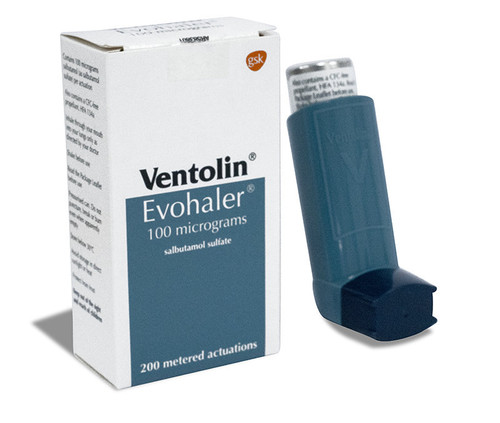
Ventolin
Ventolin - 100mcg
| Product | Per Pill | Savings | Per Pack | Order |
|---|---|---|---|---|
| 1 inhalers | $36.30 | $36.30 | Buy Now | |
| 2 inhalers | $28.27 | $16.05 | $72.59 $56.54 | Buy Now |
| 3 inhalers | $25.60 | $32.10 | $108.89 $76.79 | Buy Now |
| 4 inhalers | $24.26 | $48.15 | $145.18 $97.03 | Buy Now |
| 5 inhalers | $23.46 | $64.21 | $181.49 $117.28 | Buy Now |
| 6 inhalers | $22.92 | $80.26 | $217.79 $137.53 | Buy Now |
| 7 inhalers | $22.54 | $96.31 | $254.08 $157.77 | Buy Now |
| 8 inhalers | $22.25 | $112.36 | $290.38 $178.02 | Buy Now |
| 9 inhalers | $22.03 | $128.41 | $326.67 $198.26 | Buy Now |
| 10 inhalers | $21.85 | $144.46 | $362.97 $218.51 | Buy Now |
Overview of Ventolin
General Introduction
Ventolin (albuterol) is a widely used bronchodilator for treating bronchospasm associated with asthma and chronic obstructive pulmonary disease (COPD). It works by relaxing the muscles in the airways, increasing airflow to the lungs, and providing quick relief from symptoms like wheezing, coughing, and shortness of breath. Ventolin is available in various forms, including inhalers, nebulizer solutions, and tablets, catering to different patient needs and preferences.
History of Development and Approval
Ventolin was developed by GlaxoSmithKline and received FDA approval in 1982. Extensive research and clinical trials have confirmed its safety and efficacy in treating bronchospasm. Over the years, Ventolin has become a widely used medication due to its rapid onset of action and effectiveness in managing respiratory conditions.
Key Benefits and Unique Properties of Ventolin
Key Benefits
Key benefits of Ventolin for asthma and COPD patients include:
- Rapid Relief: Provides quick relief from bronchospasm symptoms, improving breathing within minutes
- Flexible Formulations: Available in inhalers, nebulizer solutions, and tablets, allowing for tailored treatment based on patient needs
- Ease of Use: The inhaler form is portable and easy to use, making it convenient for on-the-go relief
- Improved Quality of Life: Effectively managing symptoms helps patients maintain an active lifestyle and reduces the frequency of asthma attacks
Unique Properties
Ventolin is distinguished by its rapid onset of action and versatility in treatment forms. It quickly opens airways, providing fast relief during asthma attacks. Its availability in various formulations ensures effective use in different situations, from daily management to emergency relief.
Effectiveness of Ventolin
Comparison with Similar Medications
Ventolin offers unique advantages over other bronchodilators, including:
- Quick Onset: Acts within minutes, making it ideal for acute symptom relief
- Versatile Formulations: Available in multiple forms, including inhalers and nebulizers, providing options for different patient preferences and situations
- Proven Efficacy: Supported by extensive clinical studies demonstrating its effectiveness in managing bronchospasm
Safety and Tolerability of Ventolin
General Information on Safety and Tolerability
Ventolin is generally well-tolerated. Common side effects include nervousness, tremors, headaches, dry mouth/throat, and changes in taste. Serious side effects are rare but can include an increased heart rate, high blood pressure, and severe allergic reactions. Regular monitoring by a healthcare provider ensures safety and efficacy.
Indications for Use of Ventolin
Diseases and Conditions Treated
Ventolin is prescribed for the treatment and prevention of bronchospasm in patients with reversible obstructive airway disease, including asthma and COPD. It is also used for the prevention of exercise-induced bronchospasm. By relaxing the muscles in the airways, Ventolin helps alleviate symptoms such as wheezing, shortness of breath, and chest tightness.
Symptoms Indicating Use
Patients experiencing symptoms of bronchospasm, such as wheezing, coughing, chest tightness, and shortness of breath, may benefit from Ventolin. The medication is particularly effective when used at the onset of symptoms to provide quick relief and improve breathing.
Dosage and Administration of Ventolin
Recommended Dosage for Adults
For adults, the typical dose of Ventolin inhaler is 2 puffs taken every 4 to 6 hours as needed for symptom relief. For prevention of exercise-induced bronchospasm, 2 puffs should be taken 15 to 30 minutes before exercise. The nebulizer solution is typically dosed at 2.5 mg three to four times a day as needed.
Dosage for Children
The recommended dose for children aged 4 and older using the Ventolin inhaler is 1 to 2 puffs every 4 to 6 hours as needed. For younger children, the nebulizer solution is often preferred, with doses adjusted based on age and weight, usually ranging from 0.63 mg to 1.25 mg three to four times a day.
Dosage for Elderly Patients
Elderly patients can use Ventolin at the same dosage as younger adults. However, they should be monitored closely for side effects, particularly cardiovascular effects, and dosage adjustments may be necessary based on overall health and concurrent medical conditions.
Optimal Timing of Administration
Ventolin should be taken at the onset of bronchospasm symptoms for quick relief. For exercise-induced bronchospasm, it should be taken 15 to 30 minutes before exercise. Consistent timing and adherence to prescribed dosages help maintain effective symptom control.
Frequency of Administration
The standard dosing frequency for Ventolin is every 4 to 6 hours as needed for symptom relief. Adherence to the recommended dosing schedule is crucial for managing symptoms effectively and preventing overuse.
Impact of Food on Efficacy
Food does not significantly affect the absorption or efficacy of Ventolin. However, patients should follow the prescribed administration guidelines for optimal results.
Pharmacological Action of Ventolin
Mechanism of Action
Albuterol, the active ingredient in Ventolin, is a selective beta2-adrenergic agonist. It works by stimulating beta2 receptors in the bronchial smooth muscle, leading to muscle relaxation and bronchodilation. This action increases airflow to the lungs, providing relief from bronchospasm symptoms.
Molecular and Cellular Targets
Albuterol targets beta2-adrenergic receptors in the bronchial smooth muscle. Activation of these receptors triggers a cascade of intracellular events that result in muscle relaxation and dilation of the airways, improving airflow and reducing respiratory symptoms.
Metabolic Pathways
Albuterol is metabolized primarily in the liver and excreted in the urine. Its half-life is approximately 4 to 6 hours, allowing for multiple daily doses as needed for symptom control.
Biochemical Changes
The stimulation of beta2-adrenergic receptors by albuterol leads to increased cyclic AMP (cAMP) levels within the bronchial smooth muscle cells. Elevated cAMP levels result in muscle relaxation, bronchodilation, and improved airflow, alleviating symptoms of bronchospasm.
Physiological Effects
Ventolin helps reduce the symptoms of bronchospasm, such as wheezing, coughing, and shortness of breath. By effectively opening the airways, it promotes easier breathing and enhances the patient's ability to engage in daily activities and exercise.
Composition of Ventolin
Active Ingredient
The active ingredient in Ventolin is albuterol sulfate. It is available in various formulations, including inhalers, nebulizer solutions, and tablets, each designed to deliver the medication effectively to the lungs.
Inactive Ingredients
Ventolin inhalers contain inactive ingredients such as propellants (HFA-134a), which help deliver the medication as an aerosol. The nebulizer solution includes inactive ingredients such as sodium chloride and sulfuric acid, which ensure the stability and effectiveness of the solution.
Role of Each Component
Albuterol sulfate acts by relaxing bronchial smooth muscle and increasing airflow to the lungs. Inactive ingredients in the formulations support the delivery, stability, and absorption of the active ingredient, ensuring that the medication is effective and safe for patient use.
Side Effects of Ventolin
Common Side Effects
Common side effects of Ventolin include nervousness, shaking (tremor), headache, mouth/throat dryness or irritation, and changes in taste. These side effects are usually mild and resolve on their own.
Rare Side Effects
Rare side effects may include chest pain, irregular heartbeat, severe dizziness, and fainting. Patients experiencing these symptoms should seek immediate medical attention.
Serious Side Effects
Serious side effects requiring immediate medical attention include an increased heart rate, high blood pressure, severe allergic reactions (rash, itching/swelling, severe dizziness, trouble breathing), and worsening breathing problems.
Frequency and Severity
Most side effects are mild and occur early in the treatment. Serious side effects are rare but warrant close monitoring by a healthcare provider. Regular follow-up appointments can help manage and mitigate these risks, ensuring safe and effective use of Ventolin.
Prevention of Side Effects from Ventolin
General Precautions
To minimize side effects, patients should follow the prescribed dosage and avoid overuse of the medication. Regular monitoring by a healthcare provider can help detect and manage side effects early. Patients should inform their healthcare provider of any other medications they are taking and any pre-existing health conditions.
Recommendations for Better Tolerability
Using Ventolin as directed and maintaining regular follow-up appointments with a healthcare provider can improve tolerability. Patients should be educated on the proper use of inhalers and nebulizers to ensure effective delivery of the medication. Hydration and avoiding irritants like smoke can also help reduce side effects.
Contraindications for Ventolin
Conditions and Diseases
Ventolin is contraindicated in patients with a known hypersensitivity to albuterol or any of its components. It should be used with caution in patients with cardiovascular disorders, hyperthyroidism, diabetes, and seizure disorders.
Explanation of Contraindications
Albuterol may exacerbate certain conditions, such as cardiovascular disorders, due to its effects on heart rate and blood pressure. Hypersensitivity reactions can cause severe allergic responses, making it crucial to assess a patient's medical history and allergies before prescribing Ventolin.
Warnings and Precautions for Ventolin
Potential Risks
Patients should be monitored for signs of cardiovascular effects, such as increased heart rate and blood pressure. Caution is advised in patients with a history of arrhythmias, seizures, and hyperthyroidism. Regular monitoring by a healthcare provider can help mitigate these risks.
Safety Measures
Regular monitoring by a healthcare provider, starting with a low dose, and adjusting as needed can help mitigate risks. Patients should be instructed to report any symptoms of cardiovascular effects, such as chest pain or palpitations, and any severe allergic reactions.
Missed Dose
Immediate Actions
If a dose is missed, take it as soon as remembered unless it is almost time for the next dose. Do not double the dose to catch up. For inhalers, use the missed dose as soon as possible and resume the regular dosing schedule.
Preventive Strategies
Using reminders and keeping a consistent schedule can help prevent missed doses. Patients can set alarms, use medication reminder apps, or keep a medication diary to track their doses.
Drug Interactions
Interacting Medications
Ventolin may interact with other medications, including beta-blockers, diuretics, and certain antidepressants. These interactions can either reduce the efficacy of Ventolin or increase the risk of adverse effects. It is essential to inform the healthcare provider of all medications being taken to avoid potential interactions.
Effects of Interactions
These interactions can affect the metabolism and efficacy of Ventolin or the concomitant medications. For instance, beta-blockers may reduce the effectiveness of albuterol, while diuretics can increase the risk of hypokalemia. Monitoring blood levels and adjusting dosages may be necessary to manage these interactions.
Avoiding Interactions
Inform the healthcare provider of all medications being taken to avoid potential interactions. Patients should not start, stop, or change the dosage of any medicines without their healthcare provider’s approval. Regular reviews of medication regimens can help identify and manage potential interactions.
Overdose
Symptoms of Overdose
Symptoms of overdose may include severe dizziness, fainting, chest pain, irregular heartbeat, and seizures. Seek emergency medical help if an overdose is suspected. Supportive measures and symptomatic treatment are recommended.
Immediate Actions
Seek emergency medical help if an overdose is suspected. Supportive measures and symptomatic treatment are recommended. Hospitalization may be required for monitoring and supportive care in severe cases.
Pharmacokinetics
Absorption
Albuterol is rapidly absorbed following inhalation, with peak plasma concentrations reached within 2 to 4 hours. The onset of action is typically within 5 to 15 minutes, making it effective for quick relief of bronchospasm.
Distribution
Albuterol is distributed throughout the body, with the highest concentrations found in the lungs. It crosses the blood-brain barrier in small amounts and is present in breast milk.
Metabolism
Albuterol is metabolized primarily in the liver to inactive metabolites, which are then excreted in the urine. Its half-life is approximately 4 to 6 hours, allowing for multiple daily doses as needed.
Elimination
Albuterol is excreted primarily through the urine, with approximately 80% of the dose excreted within 24 hours. The drug's pharmacokinetic profile allows for effective dosing intervals of every 4 to 6 hours.
Dosage Forms
Available Forms and Dosages
Ventolin is available in inhalers (90 mcg per actuation), nebulizer solutions (0.083% and 0.5%), and tablets (2 mg and 4 mg). These various forms and dosages allow for flexible and tailored treatment approaches based on patient needs and tolerability.
Benefits of Different Forms
The availability of multiple forms of Ventolin makes it suitable for various patient preferences and clinical situations. Inhalers provide quick relief and portability, while nebulizer solutions are effective for patients who may have difficulty using inhalers. Tablets offer an alternative for those who prefer oral medication.
Pregnancy and Breastfeeding
Safety During Pregnancy
Ventolin should be used during pregnancy only if the potential benefit justifies the potential risk to the fetus. There is limited data on the use of Ventolin in pregnant women, and animal studies have shown adverse effects on the fetus. Pregnant women should discuss the potential risks and benefits with their healthcare provider before starting treatment.
Safety During Breastfeeding
Albuterol is present in low concentrations in breast milk. Due to the potential for adverse reactions in nursing infants, a decision should be made whether to discontinue breastfeeding or discontinue the drug, considering the importance of the drug to the mother. Breastfeeding mothers should consult their healthcare provider to weigh the potential risks and benefits.
Storage Conditions
General Recommendations
Store Ventolin at room temperature between 20°C to 25°C (68°F to 77°F). Keep the medication in its original container, tightly closed, and out of reach of children and pets.
Specific Storage Instructions
Ventolin inhalers should be stored away from direct sunlight and heat. The canister should not be punctured or exposed to high temperatures. Nebulizer solutions should be stored in their original packaging and used before the expiration date.
Expiry and Stability
Check the expiration date on the package and do not use Ventolin past the expiration date. Proper storage ensures the medication remains effective and safe to use. Dispose of expired or unused medication according to local regulations to prevent accidental exposure or misuse.
Clinical Trials and Efficacy
Overview of Clinical Studies
Ventolin has undergone extensive clinical trials to evaluate its safety and efficacy in treating bronchospasm associated with asthma and COPD. These studies included randomized, double-blind, placebo-controlled trials involving thousands of patients worldwide.
Results and Findings
Clinical trials have shown that Ventolin significantly improves lung function and reduces symptoms of bronchospasm. Patients treated with Ventolin demonstrated better outcomes in terms of symptom relief and overall lung function compared to those receiving a placebo.
Comparative Studies
Studies comparing Ventolin with other bronchodilators have shown that Ventolin provides rapid and effective relief of bronchospasm. Its quick onset of action and versatility in formulations make it a preferred choice for many healthcare providers.
Conclusion
Summary of Key Points
Ventolin is an effective bronchodilator for treating bronchospasm associated with asthma and COPD. Its rapid onset of action, multiple formulations, and proven efficacy make it a valuable option for patients. The medication is generally well-tolerated, with a well-documented safety profile.
Recommendations
For optimal results, patients should follow their healthcare provider's instructions regarding dosage and administration. Regular monitoring and follow-up appointments are essential to ensure the medication's effectiveness and manage any side effects. Patients should carry their inhaler at all times for quick relief during asthma attacks.
Final Thoughts
Ventolin significantly improves the quality of life for patients with asthma and COPD by effectively managing bronchospasm and providing quick relief from symptoms. With its proven efficacy and safety, Ventolin remains a trusted choice for healthcare providers and patients in the management of respiratory conditions.
